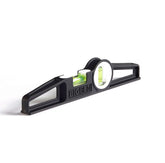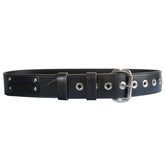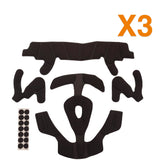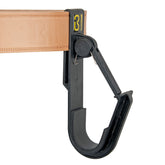It’s something all on-site workers fear.
Falls from height are one of the leading causes of major injury within the construction and scaffolding industries, a trend that doesn’t look like it’s going to change any time soon.
As an industry we do our utmost to prevent such accidents. While positive progress has been made, it is true that sometimes, despite our best efforts, falls still occur. The question is: if a worker does fall from height… what happens next?
Sound preparation and the right tools and training will help prevent accidents and avoid serious injuries. It is therefore essential that a working at height rescue plan is available with strict measures in place so a trained team is well-drilled regarding what actions to take if a fall occurs. In this blog, we’ll discuss the key elements of a scaffolding rescue and evacuation plan in the event of falls from height.
First step… prevent the fall from happening!
From the outset, we must try to eliminate the possibility of a fall from happening at all. Examine whether or not work needs to be done at height, or if there may be an alternative solution.
If work at height does need to take place, you must deploy the correct height safety equipment, fall prevention systems and PPE so workers can do the job safely. Always select the best height safety equipment available, from harnesses and lanyards to lifelines.
It is crucial that workers feel confident to perform the necessary work at height in a secure environment.
Follow the guidance
When devising a working at height rescue and evacuation plan, your first port of call should always be the Work at Height Regulations 2005 (WAHR). This regulation lays out the protocols designed to ensure if a fall does take place, an appropriate rescue plan exists.
The WAHR states that all employers and employees who work at height must have provisions in place for quick and easy evacuation and rescue in the event of an accident or emergency. It also states that an effective evacuation and rescue plan should not rely on the use of emergency services alone. However, these services should always be contacted to ensure rapid first-aid can be delivered once a worker has been rescued.
Create a solid working at height rescue plan for scaffolding
A thorough risk assessment should always be the first place from the onset. Once it has been deemed necessary to work at height and all of the risks associated with this work being carried out have been documented, it’s time to put together a rescue plan that mitigates these risks.
An effective rescue plan should include the following procedures for:
- Limiting the time the casualty is suspended
- Rescuing the casualty, either via self-rescue or by another person or persons
- Emergency treatment during and after the rescue
- Quickly identifying the symptoms and signs of orthostatic intolerance, orthostatic syndrome, harness induced pathology or suspension trauma
What to do in a medical emergency
Following a fall, often a worker will find themselves suspended by a harness, lanyard or fall arrest device. The rapid rescue of that person is critical. Although the fall has been arrested, being suspended can cause a number of serious health issues.
A person who suffers a fall and is suspended in a fall arrest system should always be treated as a medical emergency. Prolonged hanging in a safety harness, especially if unable to move, is known as suspension trauma and can lead to orthostatic intolerance, serious injury, or even loss of life. It is imperative that during this critical period between the fall taking place and the emergency services arriving that the person suspended at height can be rescued.
After the rescue, the casualty should always be taken to the nearest Accident & Emergency for a medical examination.
Orthostatic intolerance – suspension trauma symptoms and signs
If suspension trauma or orthostatic intolerance set in, you need to be aware of the signs quickly in order to prevent any long-term damage. The symptoms of orthostatic intolerance can often be seen within just 2 or 3 mins of the fall and can include:
- Nausea
- Faintness
- Breathlessness
- Dizziness
- Sweating
- Unusually low heart rate
- Unusually low blood pressure
- Paleness
- Hot flushes
- Change in skin tone to greyish colour
- Loss of vision
- Increased heart rate
Further health effects
Being suspended at height can have other catastrophic effects, including a loss of consciousness. This means that a suspended person will not be able to move his or her limbs, meanings venous pooling will increase. This will reduce the circulating blood volume even further.
In addition, any restrictions of the femoral arteries and veins caused by the safety harness straps could be a contributory factor to venous pooling. The effects of this can be extremely severe. leading to a potentially fatal reduced blood flow to the brain, and also a dramatic impact on other vital organs such as the kidneys. The kidneys are also very sensitive to blood oxygen levels and renal failure as a result of excessive venous pooling is a real possibility.
Unless the casualty is rescued quickly by rescuers using a set emergency rescue plan, the effects of venous pooling and any associated loss of consciousness may likely to lead to loss of life.
Note: Do not move the casualty quickly into a horizontal position. This is often the natural reaction and while it may seem like the clear solution, it is likely to cause a massive return of deoxygenated and possibly toxic blood to the heart, which is then unable to cope, possibly leading to a cardiac arrest.
Instead, it is vitally important that the casualty is put into a sit position with their knees bent in a "W" position, ideally against a solid structure for approximately 30 - 40 minutes. This will allow the blood to be released slowly.
Practicing your emergency rescue plan
The WAHR state that rescue procedures must be practiced on a regular basis. The regular practicing of your rescue plan is just as important and the plan itself. It’s important to be well drilled in the event of a fall occurring.
Let’s put it in writing
Answering the basic questions below will help you formally develop your scaffolders rescue and evacuation plan:
- If a person falls and is suspended in a fall arrest system can they be rescued quickly and safely?
- If a person falls how will others know?
- Who will likely see the fall first?
- What is the protocol when calling the emergency services?
- What information will be given to the emergency services?
- What communication system will be used between the suspended person and the rescue team?
- Rescuing the person, either self-rescue or by a rescue team?
- Can you get the person out of suspension?
- How will the safety of the rescuers be assured, as well as that of the suspended person?
- How will rescue personnel get to the suspended person?
- What rescue equipment will be required to rescue the person quickly and safely?
- Where is the rescue equipment going to be located / stored?
- How will rescue be performed with quickly to minimize the risk of further injury or death due to suspension trauma?
- What is the procedure if the fallen person is injured?
- How will the accident scene be controlled?
- Are there other considerations?
We make working at height safe
At Leach’s, our mission is to make working at height safe. We deliver specialist height safety equipment to help prevent accidents occurring on site and protect workers from injuries.
If you need advice on what equipment best suits your needs, or if you have any further questions, please contact us on sales@www.leachs.com or 01432 246 800.


















